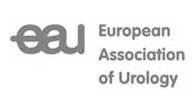Treatment
Treatment depends on the type of stone and its underlying cause.
For larger stones, your doctor may suggest certain procedures based on the location and size of the kidney stones. If there is associated infection, loss of renal function or excessive pain not relieved by medication, urgent emergency surgery is required.
Surgical
Surgery for Kidney Stones
Surgical options include:
Ureteroscopy and Lasertripsy
A tiny telescope is passed into the ureter through the urethra under general anaesthesia. Once the stone is located, a tiny basket shaped instrument at the end of the scope grabs and removes the stones. Larger stones are first broken down with a laser before removal.
PCNL and Mini-PCNL
Sometimes, a more invasive procedure called percutaneous nephrolithotomy may be required for very large stones. Your surgeon will make an incision in your back and inserts a hollow tube with a rigid telescope to remove the stones directly or break them into fragments before removing them.
Mini-PCNL is a new technique that uses a smaller tube and smaller incision. The incision is smaller (approximately 7 mm), and allows for less bleeding, pain and facilitates faster recovery.
Ureteric Stent
Sometimes, your surgeon may insert a stent or tube before or after kidney stone procedures through the bladder into the kidney to hold the urinary tube open. This prevents ureteric swelling and stone pieces from blocking the ureter and causing pain.
The stent itself can cause some discomfort with flank pain during urination, urinary frequency and urgency, and blood in the urine. We will only use the stent if it is necessary and we will aim to leave the stent in for as short a time as it is safe medically.
Ureteroscopy with Holmium Laser

Ureteroscopy is a procedure that involves the use of a thin, long tube called a ureteroscope, to examine, diagnose and treat urinary tract problems. The ureteroscope is most commonly used for the diagnosis and treatment of kidney stones but is also indicated for the treatment of various conditions such as frequent urinary tract infections, urinary blockage, hematuria (blood in the urine), unusual cell growth or tumour in the ureters (urine tubes). Ureteroscopes may be flexible, or rigid and firm.
Flexible Pyeloscopy with Holmium Laser

Flexible pyeloscopy with Holmium laser is a minimally invasive procedure used to treat kidney stones without the need for an incision. The procedure involves introducing a fine telescope via the urethra (the tube through which urine leaves the body) into the urinary bladder and then up the ureter (tube connecting your kidney and bladder) into the kidney to break up the stone(s) with a Holmium laser. The procedure has a high success rate and can be performed as day surgery.
Percutaneous Nephrolithotomy

Percutaneous nephrolithotomy is a procedure to remove large stones from the kidneys or ureters. The procedure is indicated for stones resistant to shockwave lithotripsy (a non-invasive method that uses sound waves), large stones (more than 2 cm) that occur as a result of kidney infections that require complete removal, and stones that are high up in the ureter near the kidney.
Transuretheral cystolitholapaxy

Transurethral cystolitholapaxy is a procedure performed to break down and remove bladder stones. The surgery is performed under local or general anaesthesia. During the procedure, you may be given antibiotics to prevent the risk of infection. Your doctor inserts a cystoscope (a small tube with a camera at the end) into the urethra and advances it into the bladder.
Non-Surgical
Small kidney stones < 4mm can usually pass without medical intervention. Your doctor may prescribe medication to relieve pain or medication to improve the chances of stone passage. Larger stones may be treated by a non-surgical technique called extracorporeal shockwave lithotripsy.
Using a device called a lithotripter, high energy sound waves are focused on the kidney stone from outside the body. The shock waves vibrate and break the stones to pieces without harming the rest of the body. The stone fragments can then pass out through the urine.
What is Extracorporeal Shock Wave Lithotripsy?

Kidney stones are small, hard deposits that can develop in the kidneys. Lithotripsy, often referred to as extracorporeal shock wave lithotripsy (ESWL), is the most common procedure for the management of kidney stones (renal lithiasis). It uses shock waves to break up stones that form in the kidney, bladder or ureter, enabling easy passage of the fragments out of the body within the urine.
Most kidney stones are small and can be passed in the urine. However larger stones are unable to pass through the ureters and can cause bleeding, kidney damage or urinary tract infections and may require more invasive treatment.
Lithotripsy is indicated in people with large kidney stones causing pain, urinary tract infection, bleeding and renal damage.
Diagnosis of Kidney stones
Your doctor usually arrives at a diagnosis of kidney stones based on your symptoms and medical history. Blood tests, urine tests, and other investigations may be ordered to confirm the diagnosis. Several diagnostic techniques such as X-ray, ultrasound, CT and intravenous urogram(contrast dye injected into the kidneys is detected through X-ray) may also be used to identify the location of the kidney stones.
Procedure of Lithotripsy
During lithotripsy, you will lie on a water-filled cushion. High-energy sound waves that are created outside of the body travel through the body until they hit the kidney stones and break them into tiny pieces. You may feel a tapping sensation on your skin as the shockwaves enter the body.
A tube is inserted through your bladder or your back into your kidney to help drain urine from your kidneys until all the tiny fragments of stone pass out of your body. The tube may be inserted before or after the procedure. The procedure takes about 45 to 60 minutes to complete.
You will be taken to the recovery room to be monitored for a couple of hours after the procedure. Lithotripsy is usually an outpatient procedure where you can go home on the same day. You can usually resume regular activities within a day or two. You may experience pain when the stone fragments pass, which occurs soon after treatment and may last for 4 to 8 weeks. Oral pain medications are prescribed to relieve pain. You will be instructed to drink plenty of water to help clear the stone fragments out of your urinary system.
What are the Potential Risks and Complications associated with Lithotripsy?
Lithotripsy is considered a relatively safe procedure, but as with any medical procedure, there may be risks involved. Some risks associated with lithotripsy include:
- Bleeding in or around the kidney
- Kidney infection
- Failure to remove the stones requiring additional treatment
- Pain if a stone fragment blocks the flow of urine
- Kidney damage or a decrease in kidney function
- Ulcers in your stomach or intestine







